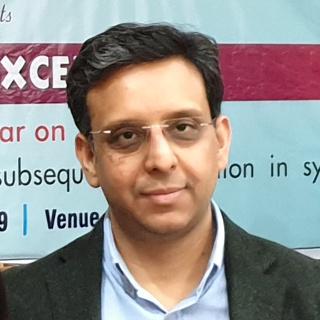Fiber Telelink is a fiber optic company providing innovative solutions to its clients. Its product range includes aramid-reinforced plastic (ARP) rods and fiber-reinforced plastic (FRP) rods. In an interview with Wire & Cable India magazine, Mr. Ravi Kumar Bansal, Director, Fiber Telelink Pvt. Ltd. talks about the company’s recent developments, capabilities, and future outlook.
Wire & Cable India: Kindly take us through the overview of Fiber Telelink, its specialisations, and the vision behind establishing the company.
Ravi Kumar Bansal: Founded in 2021, Fiber Telelink is really a young company, with world-class cutting-edge technology and international partners to create innovative solutions for different applications of FRP rods across optical fibers, construction, and the mining industry. Since, the demand for optical fiber cables has a notable surge in the telecom sector after 5G, cloud base services, the rise of IoT, and the digitilisation of payment gateways, demands for FRP rods have significantly increased for optical fibers in 2022. Some estimate that the market is expected to grow by 35.1 percent, from USD 66.54 billion in 2021 to USD 89.91 billion. By 2026, the market could reach around USD 227.54 billion.
WCI: Could you please describe the product range of the company and the applications of the products? Kindly outline the raw material used in the production.
RKB: At Fiber Telelink, we have a broad range of products. Apart from FRP rods, we have water-blocking tapes used to prevent longitudinal penetration of water into the cable core and impregnated glass fiber roving used for peripheral reinforcement of optical fibers. Parallelly, we are working with European manufacturers for specialised compounds used in highly specialised fiber optic cables for critical medical usages like MRI cables, dental lighting, and surgical lighting.
Watch: RR Global: Shreegopal Kabra on Fire Safety
WCI: Please shed some light on the capabilities of Fiber Telelink in terms of – manufacturing and technologies used in the production. Also, share details about the infrastructure of the facility.
RKB: Presently, in Thermal FRP, we have monthly capacity of around 20,000 km, both EAA-coated and uncoated from 0.5mm to 6mm. For EAA coated steel, the capacity is around 10,000 km monthly. We are continuously working to double the capacity in all product ranges. Our portfolio is largely driven by value-added products like flat FRP rods, water-blocking glass rovings and bio-based FRP rods from renewable sources. We have a new state-of-the-art facility with a constructed area of 36000 sq ft.
WCI: Kindly talk about the key features of the FRP rods and the market presence of the company. What are the challenges and opportunities in manufacturing FRP rods for the optical fiber segment?
RKB: Fiber reinforced plastic (FRP) is a composite material made of a polymer matrix reinforced with fibers. FRP has some important features – it is non-conductive, has radar transparency, dimensional stability and corrosion resistance. Though being a young company, we have acquired a strong presence in a short time. Currently, we have currently 5 percent domestic market presence with 2-3 percent export exposure.
We are moving forward to increase the capacities to meet export and domestic demands. Every manufacturing segment has its own challenges but being continuously into the innovation of new products and reverse engineering, all challenges become opportunities for us. At Fiber Telelink, we are working like an open-source platform with customers and suppliers to understand the fast-growing industry demands.
WCI: There has been a notable rise in demand for OFCs with initiatives like the BharatNet project; how do you see these trends propelling the growth of the company and of the FRP rods segment?
RKB: According to the International Telecommunications Union (ITU), the latest ongoing capital investments related to fiber infrastructure are expected to total a staggering USD 144.2 billion between 2014 and 2019. One of the primary drivers for this immense capital investment into fiber infrastructure deployments comes out of thin air, in the form 5G network. In India, only 35 percent of the towers in the country are fiberised while India manufactures 100 million FKM annually.
The optical fiber industry would be a leading lighthouse of India’s technological growth. It is the only semiconductor-grade product that we completely own, and are able to manufacture across the value chain with our own IP. Though the BharatNet III project is under implementation, we are constantly working to fulfill the demands.
WCI: What are the prominent trends with regard to market drivers and constraints in the global FRP rods market?
RKB: India manufactures 100 million fiber km every year; hence, there is great potential for the FRP segment in the Indian telecom industry. Asia-Pacific is expected to dominate the market for fiber reinforced polymer (FRP) composites. Due to the high demand for applications from countries like China and India, the demand has been increasing.
In India, the electronics market witnessed a growth in demand, with market size increasing at a rapid growth rate. India’s electronic goods exports fetched USD 11.11 billion in 2020-21. The growing market of electronics, appliances, FTTH, etc. in India and China may push the market growth further in Asia-Pacific.
One of the main constraints in FRP is the stringent regulations on the disposal of composites throughout the world. The other key challenge to the global fiber reinforced market growth is the service life of FRP. The composite durability and service life, whether in optical fibers, mining or medical, are determined by their purpose. The implementation of FRP might significantly reduce the amount of maintenance required and increase the life of cables. Such factors may determine the concerned market growth.
In this increasingly urbanised and digitised world, engineers in telecommunications have found fiber reinforced polymer (FRP) composites to be the best material for their products.
The past 50 years have seen a rapid increase in rates of urbanisation across the world and the next 50 are expected to continue in a similar manner. As urbanisation requires telecommunications, and as the internet of things (IoT) is increasing its scope, it is forecasted that by 2035, there would be a trillion connected computers in the world. With these demands as well as the rollout of 5G, current networks will be insufficient.
It has been discovered that pultruded glass fiber can reduce attenuation of the high-frequency 5G signals, vastly improving existing lines of telecommunication. Additionally, new resins and process technology are growing to improve performance over traditional resins such as unsaturated polyester and vinyl ester. In the data and communication industry, this can mean higher line speeds without affecting other line properties like resistivity.
Also Read: Vindhya Telelinks: Fully Geared Up to Meet Diverse Market Needs
WCI: Has there been any recent development at the company that you would like to share? What are the future plans of Fiber Telelink?
RKB: Recently at Fiber Telelink, we got an opportunity to diversify further into the EV market. We have developed chargers for all the two-wheeler ranges and are now closely working with the manufacturers to get approvals as OEM. At Fiber Telelink, we look forward to expanding our presence across all verticals in fiber optic cable manufacturing by expanding our capabilities and product portfolio.





